The Douglas A-4 Skyhawk - Scooters 
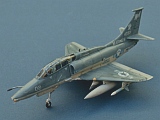
A-4M Skyhawk - VMAT-102 “Skyhawks”, US Marine Corps 1983
Italeri, with Hasegaw decals
The USMC continued to use the Douglas Skyhawk for some time after it was withdrawn
from naval service. After years of successful service in Vietnam, the Marines decided
to retain the Skyhawk instead of adopting the USN’s replacement A-7 Corsair. In
part this was because the basic design remained sound for USMC purposes, with the
wide availability of surplus USN stocks making it a very low cost option, but also
allowing a period of grace during which the USMC was able to procure the preferred
AV-8A Harrier as a longer term replacement.
The Marines also initiated a new variant, the A-4M (marketed by Douglas as the Skyhawk
II), with modern avionics and bombing systems optimised for close air support as
well as a far more powerful engine, making it the fastest A-4 variant. At long last,
the A-4M overcame the tiny cockpit limitations of the original design, marrying the
wider trainer wind screen with a larger bubble canopy for better ergonomics and much
improved visibility. The final A-4M of 158 built was delivered in 1979 and they remained
in active service with the USMC until the mid 1980s.
VMAT-102 “Skyhawks” was the USMC Skyhawk training squadron, base at MCAS Yuma in
Arizona.
Link to build page
OA-4M Skyhawk - H&MS-12 “Outlaws”, US Marine Corps 2001
The USMC continued to use the Douglas Skyhawk for some time after it was withdrawn
from naval service. Twenty-three former two seat trainers were updated to the same
standards as the main A-4M variant and used as Forward Air Controllers until replaced
by AV-8B Harriers in the mid 1980s
Link to build page
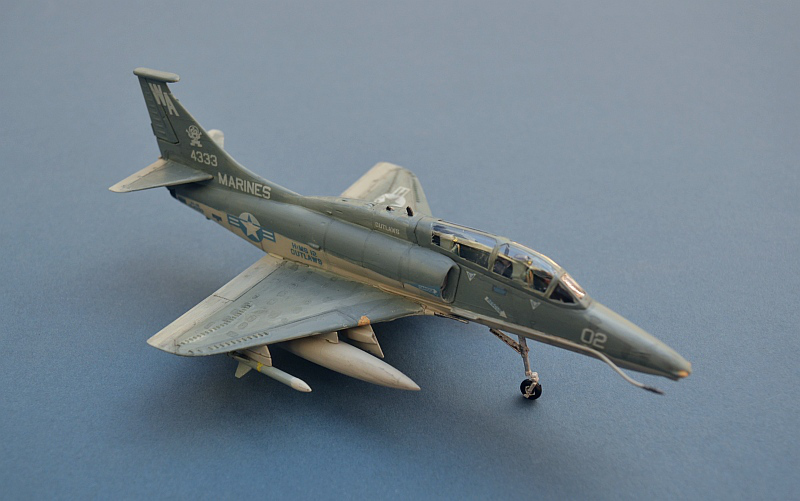
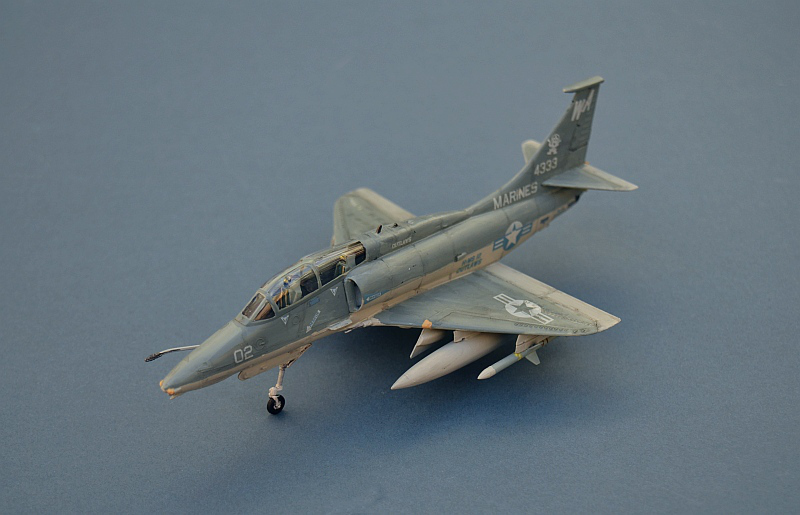
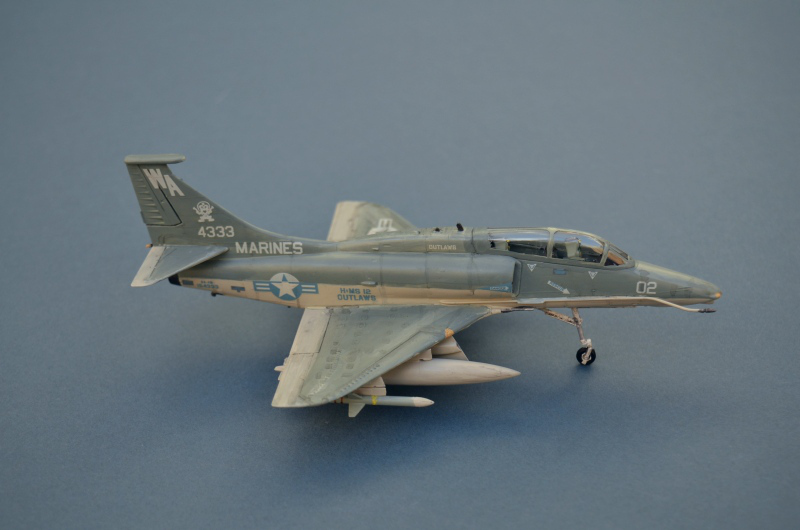
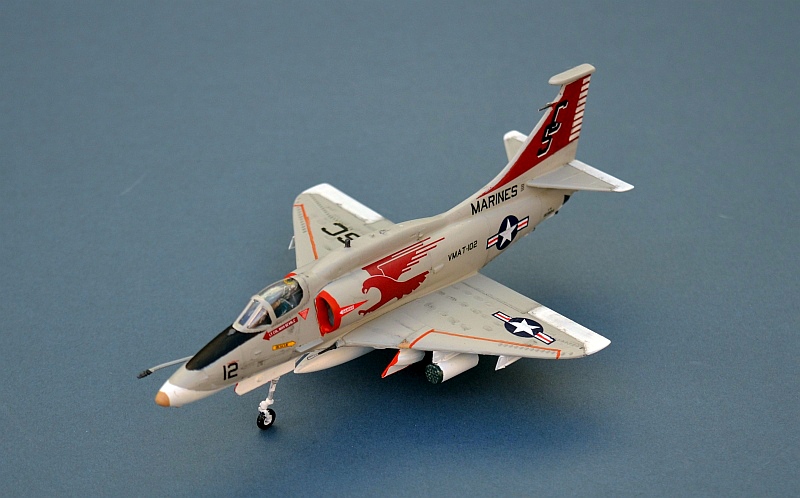
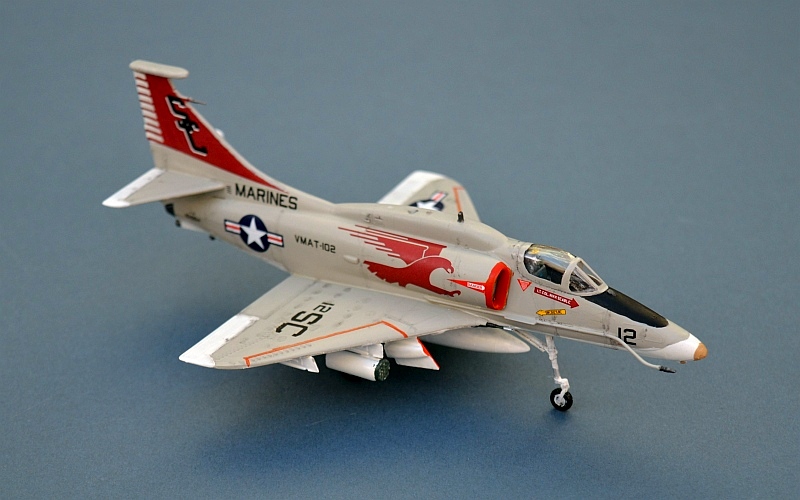
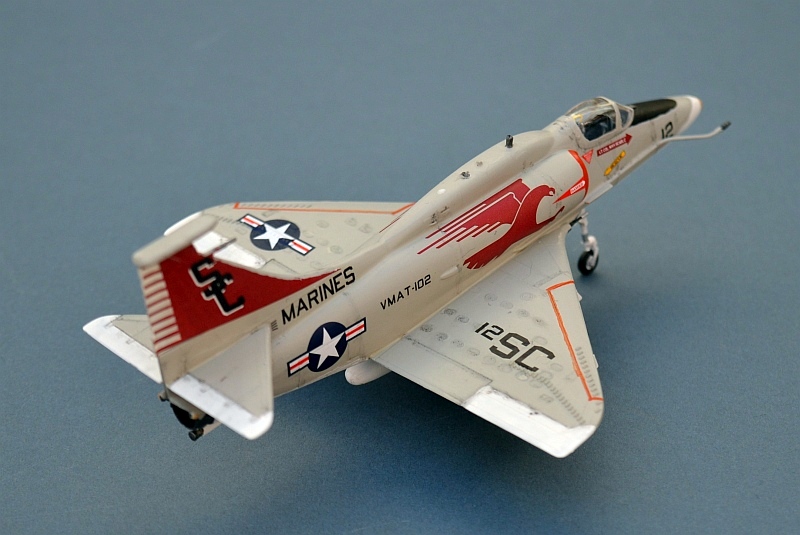
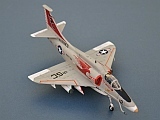
The Douglas Skyhawk was a remarkable aircraft, bucking the Cold War trend toward
ever larger and more complex designs. Lightweight, small and simple, it was nevertheless
able to carry the same weapons load as a WW2 B-17 bomber, at more than twice the
speed.
Although its range was a great deal less than a B-17, the ability to operate from
an aircraft carrier close to the action made this irrelevant.
Skyhawks, or “Scooters” as they were affectionately known, took the brunt of the
US Navy and US Marines’ initial efforts in Vietnam, with over 326 lost to combat.
The initial A-4 models were superseded by the advanced A-4E/F with longer nose, more
powerful engine, additional weapons pylons and improved avionics (including a distinctive
hump on the top of the fuselage). Over 2,960 were built between 1954 and 1979, with
many remaining in service into the 21st Century.
Douglas A-4F Skyhawk, VA-55 US Navy, USS HANCOCK, Vietnam, 1973.

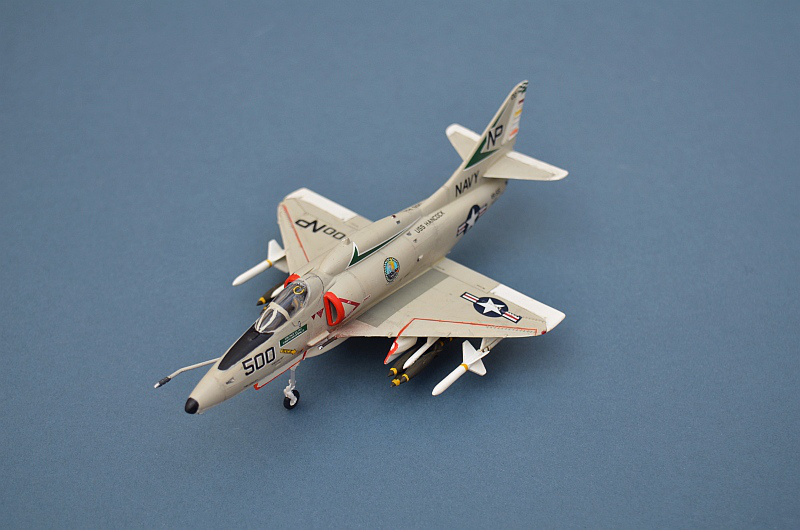
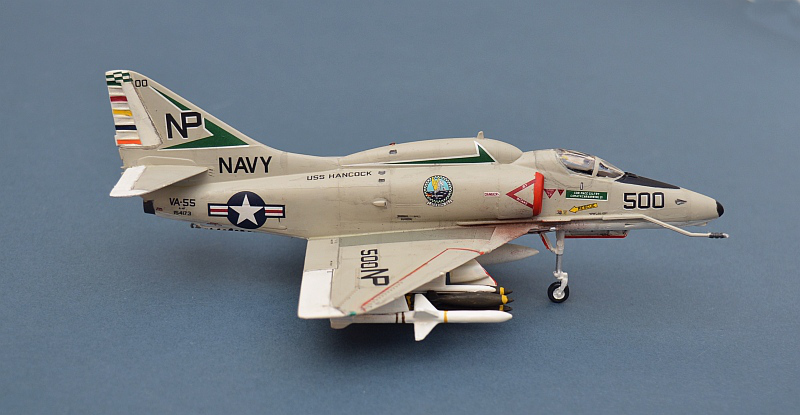
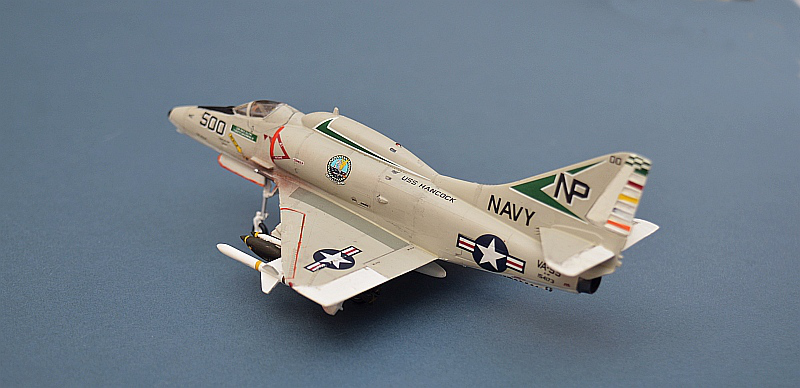
The earlier Skyhawks carried a much lower payload, with only two weapons pylons ,
a much shorter nose and a less powerful engine. INTREPID’s A-4s participated in many
of the early strikes of the Vietnam conflict, operating in the North at Yankee Station,
and the South at Dixie Station.
Douglas A-4B Skyhawk, VA-15 US Navy, USS INTREPID, Vietnam, 1967.
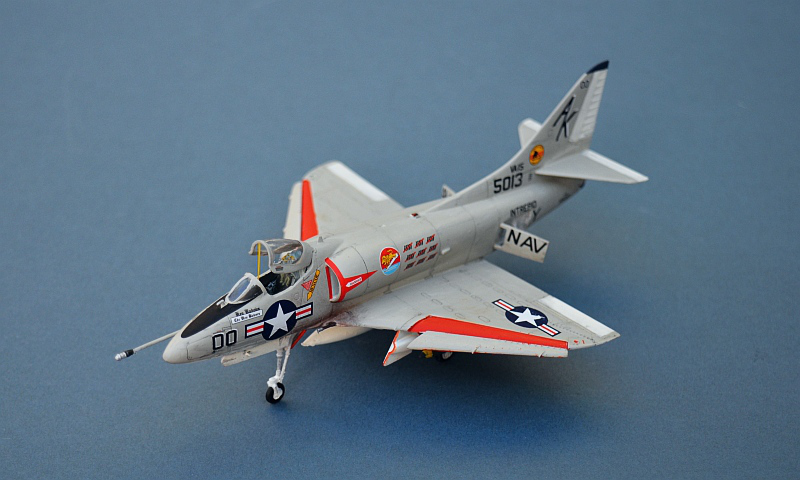
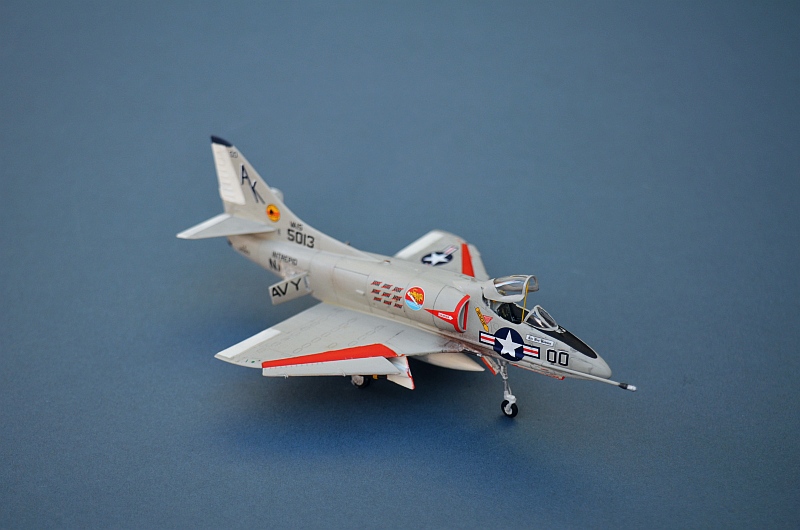
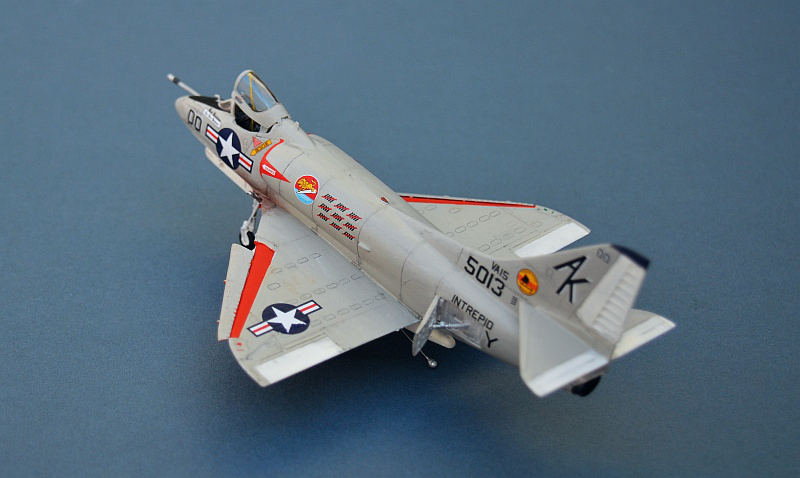
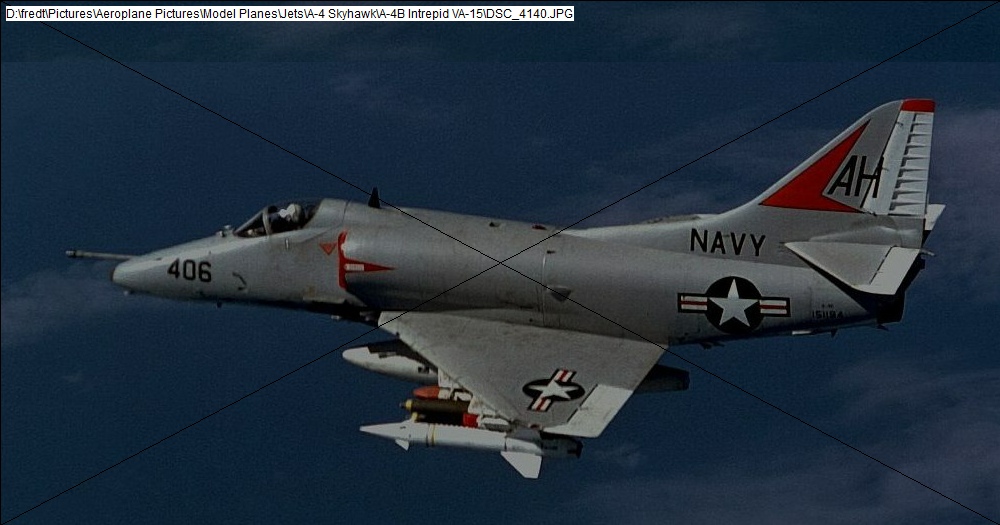
Douglas A-4G Skyhawk
805 Squadron / VF-805, Royal Australian Navy, HMAS MELBOURNE, Spithead, June 1977
Hasegawa, 1/72 with ModelDecal transfers. Link to build page
After re-forming with Seafires for the Pacific campaign, 805 Sqn finally disbanded
in 1948, but was immediately resurrected as a Royal Australian Navy Squadron. Initially
equipped with Sea Furies and embarked in the RAN's first aircraft carrier, HMAS SYDNEY,
the squadron saw active service in Korea, before transitioning to the Sea Venom in
1958, embarked this time in HMAS MELBOURNE.
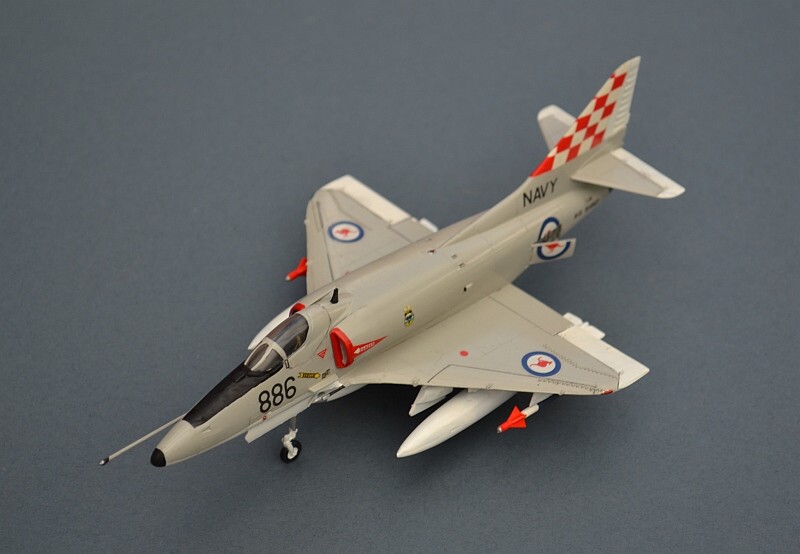
In 1968, 805 Sqn received its first A-4G Skyhawks, an aircraft it would retain until
the end of RAN fixed-wing flying in 1982. Small enough to operate from the RAN's
limited carrier deck space and offering increased operational compatibility with
the USN, the A-4 packed a powerful punch for its size, costing less than half the
price of an F-4, but capable of carrying a greater weapons load.
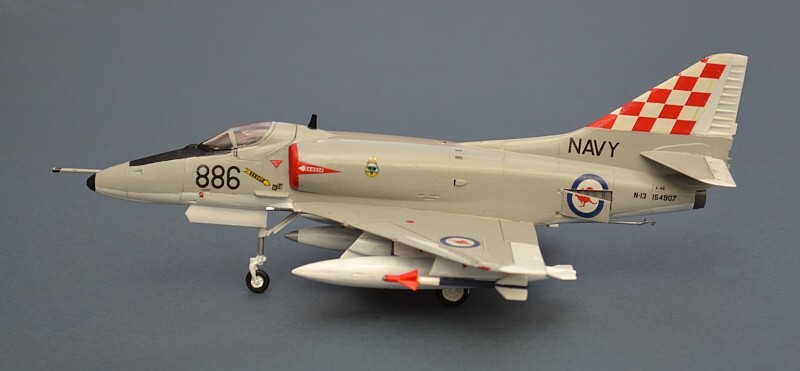
In 1977, HMAS MELBOURNE brought her A-4Gs to the Solent to participate in the HM
The Queen's Spithead Silver Jubilee Fleet review.
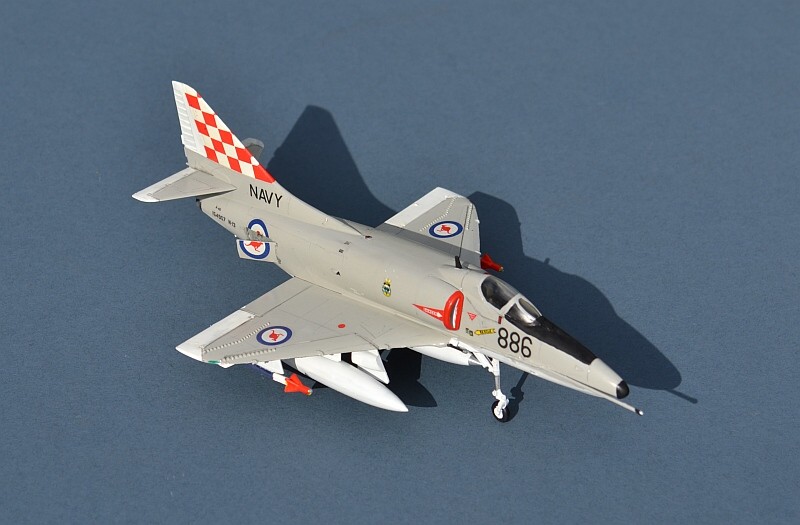
Douglas A-4K Skyhawk
75 Squadron, Royal New Zealand Air Force, June 1969
FROG, 1/72. Link to build page
The RNZAF replaced their small force of Canberras with the Skyhawk in 1969. With
regular technological updates, including fitting of an F-16 type radar under project
Kahu, these versatile and capable aircraft gave valuable service until 2001 when
the NZ government decided to abandon their combat aircraft force.

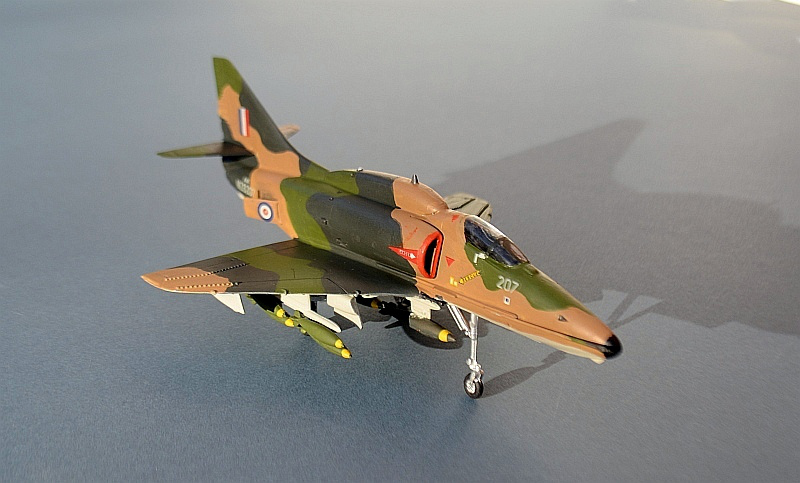
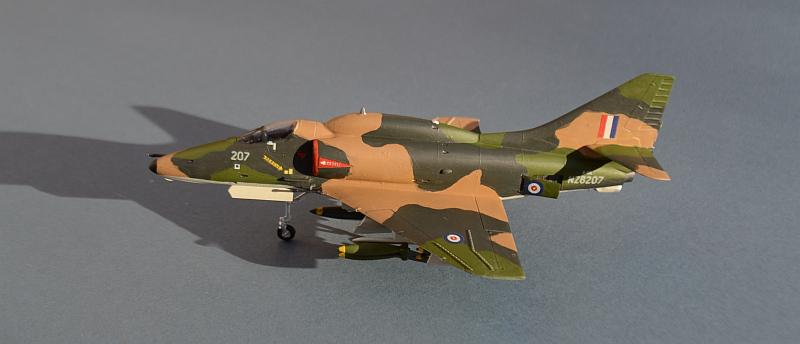
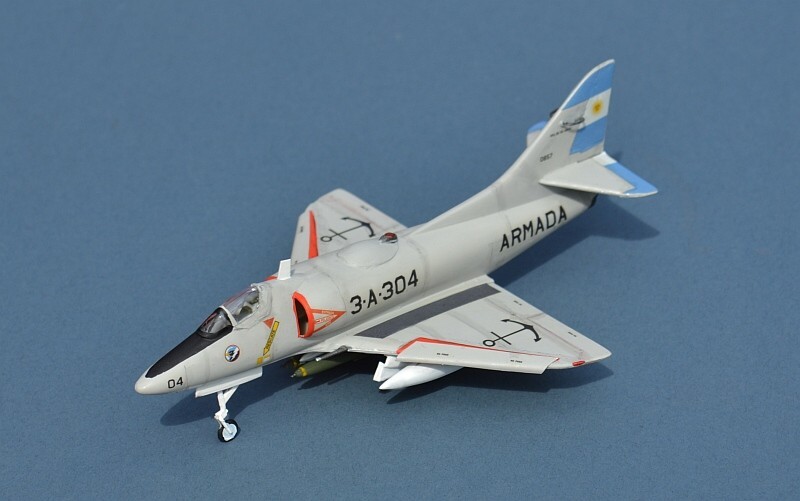
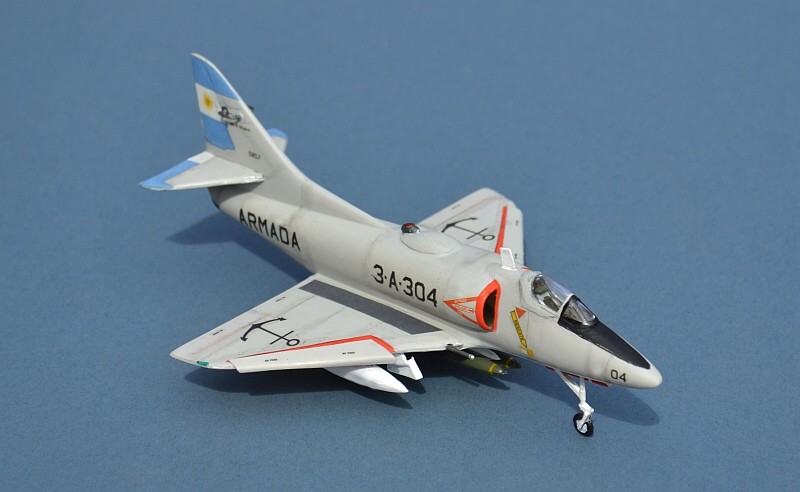
Douglas A-4Q Skyhawk - 3 Escadrilla de Caza y Ataque "Tábanos",
Armada Argentina, Rio Grande,1982.
Airfix Original Issue
This ancient Airfix kit was first issued in 1958 and represents the very early A
model Skyhawk. As such it is theoretically just about an acceptable base for an Argentine
A-4Q, albeit that it lacks the very distinctive "unskinned" rudder of the main A-4
marks. The kit itself is very much past its best and not recommended.
During the 1982 Falklands War, the Argentine Navy's A-4Q aircraft operated initially
from the carrier 25 de Mayo, but following the sinking of the General Belgrano in
May 1982 the aircraft were withdrawn to safer shore bases on the Argentine mainland
to operate alongside the Argentine Air Force's A-4Ps and A-4Cs. Naval Skyhawks participated
in the attacks on the San-Carlos landings, including the sinking of HMS ARDENT.
In all, 22 Argentine Skyhawks (10 A-4Ps, nine A-4Cs, and three A-4Qs) were lost during
the war, including eight to Sea Harriers, seven to ship-launched missiles, four to
ground-launched missiles and other anti-aircraft fire (including one to "friendly-fire")
and three to crashes.
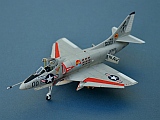
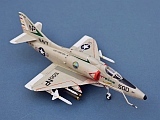 Main Index
Main Index
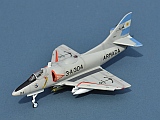
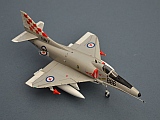
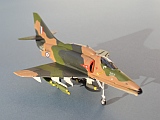
The Douglas Skyhawk was a remarkable aircraft, bucking the Cold War trend toward
ever larger and more complex designs. Designed by the legendary Ed Heineman, responsible
for the Dauntless, Havoc, Intruder and Skyraider amongst others, the diminutive Skyhawk
was lightweight, small and simple, but still able to carry the same weapons load
as a WW2 B-17 bomber at more than twice the speed.
Although its range was a great deal less than a B-17, the ability to operate from
an aircraft carrier close to the action made this irrelevant. Small enough to be
struck down below without the need for folding wings, it was ideally suited to the
smaller non-Nuclear US Carriers.
Skyhawks, or “Scooters” as they were affectionately known, took the brunt of the
US Navy and US Marines’ initial efforts in Vietnam, with over 326 lost to combat.
They also saw combat in the 1970s Arab-Israeli wars and the Falklands in 1982.
Later models remain in front line service in 2020 with the Brazilian Navy.
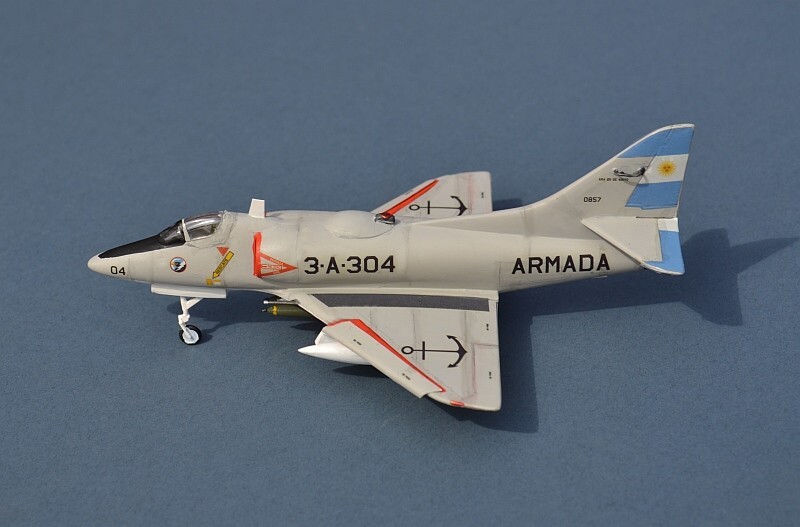
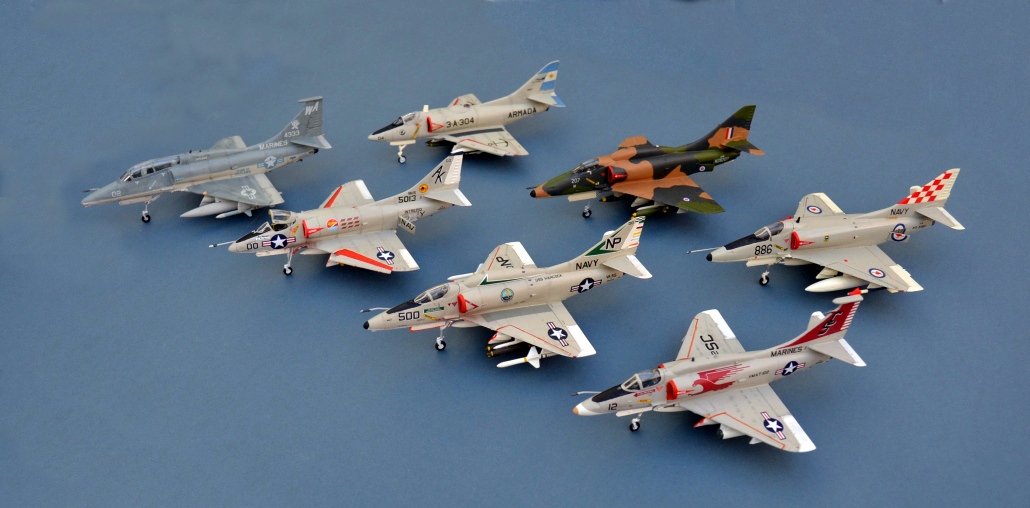
![]()






























